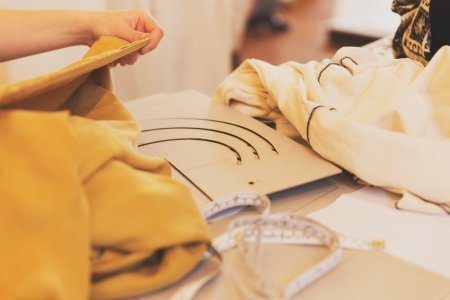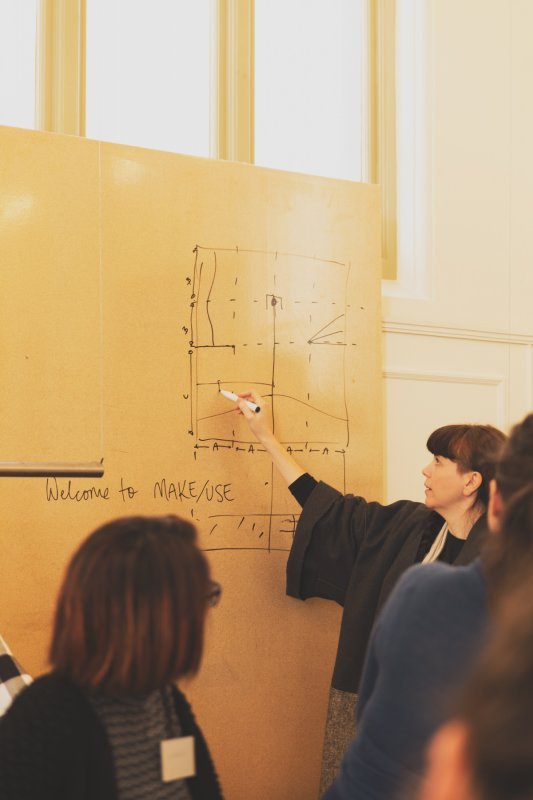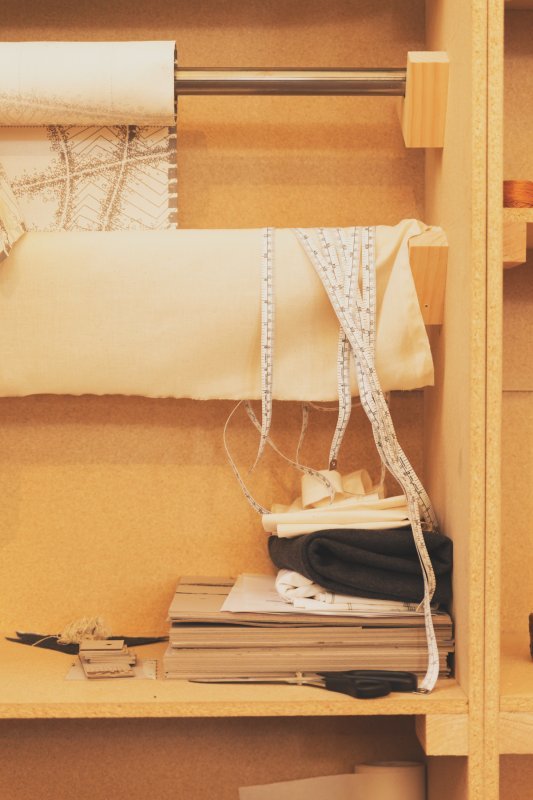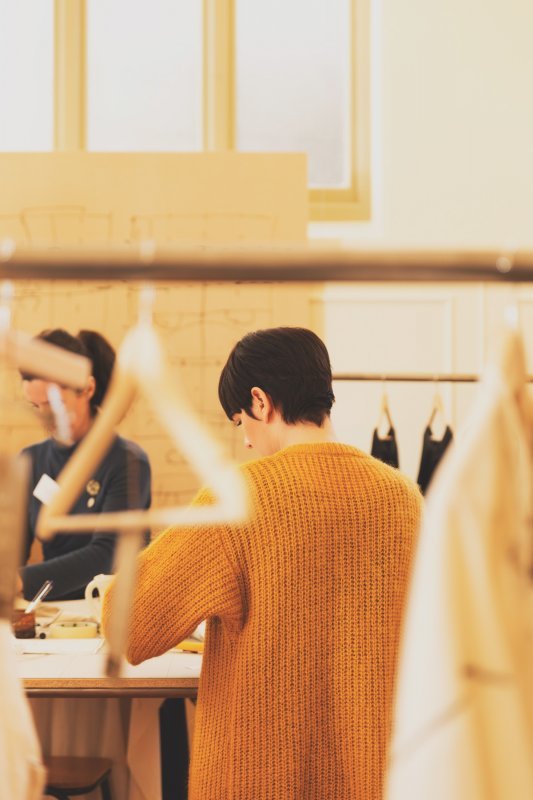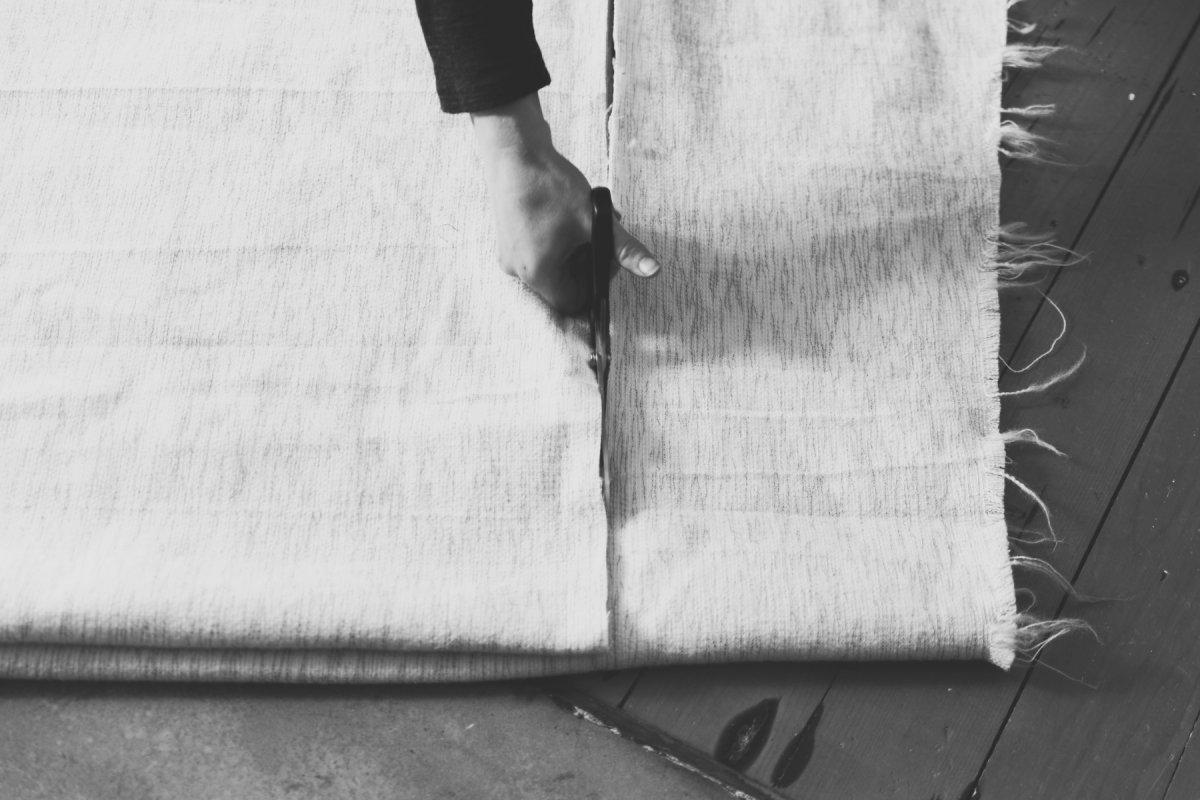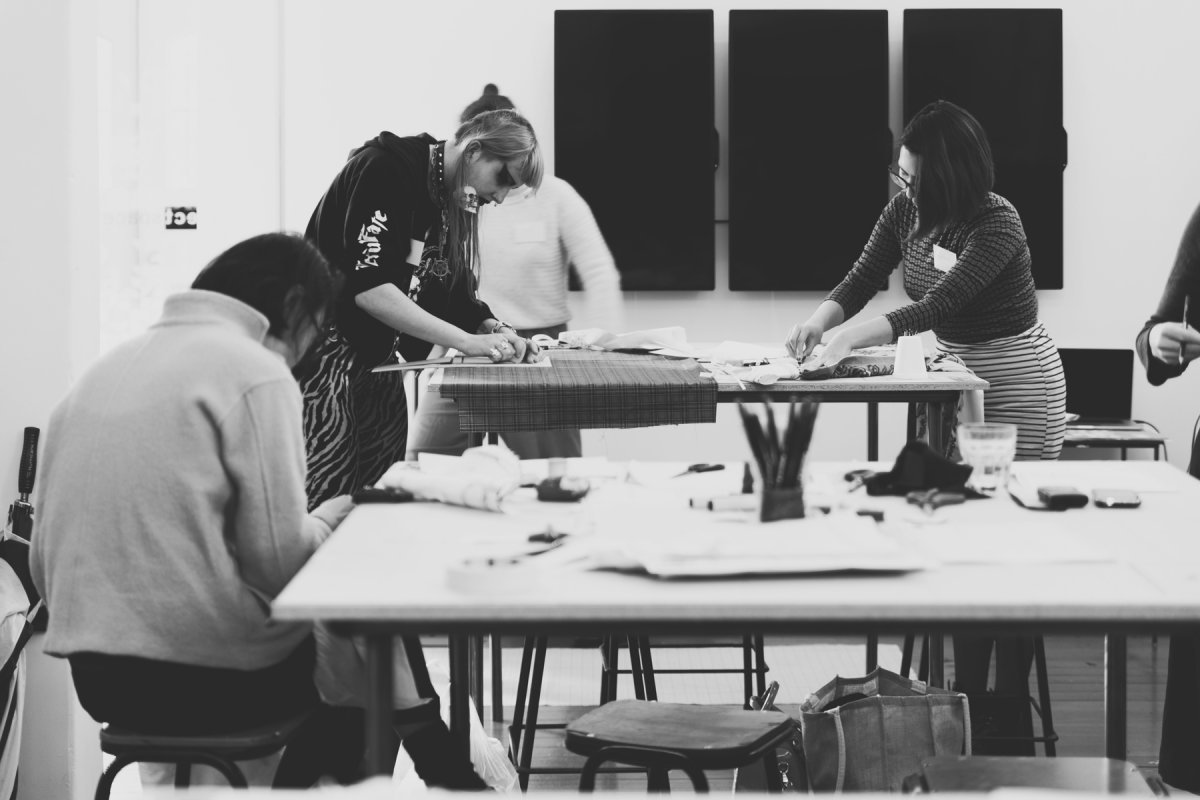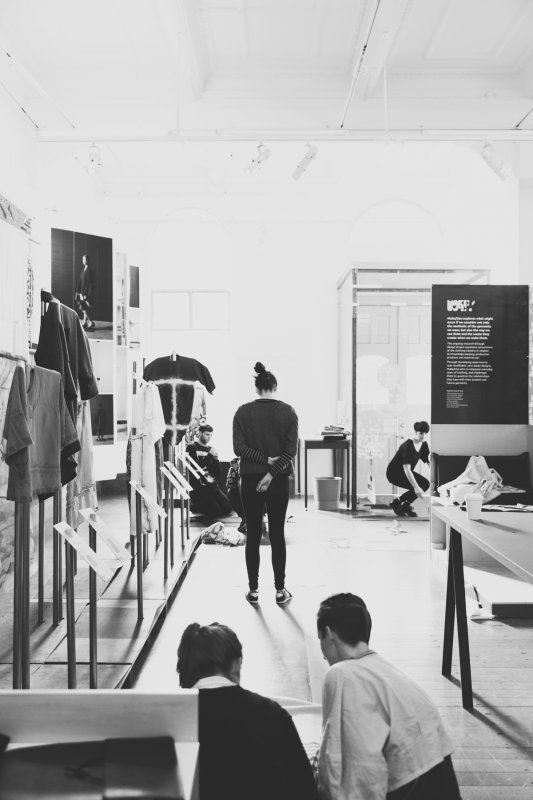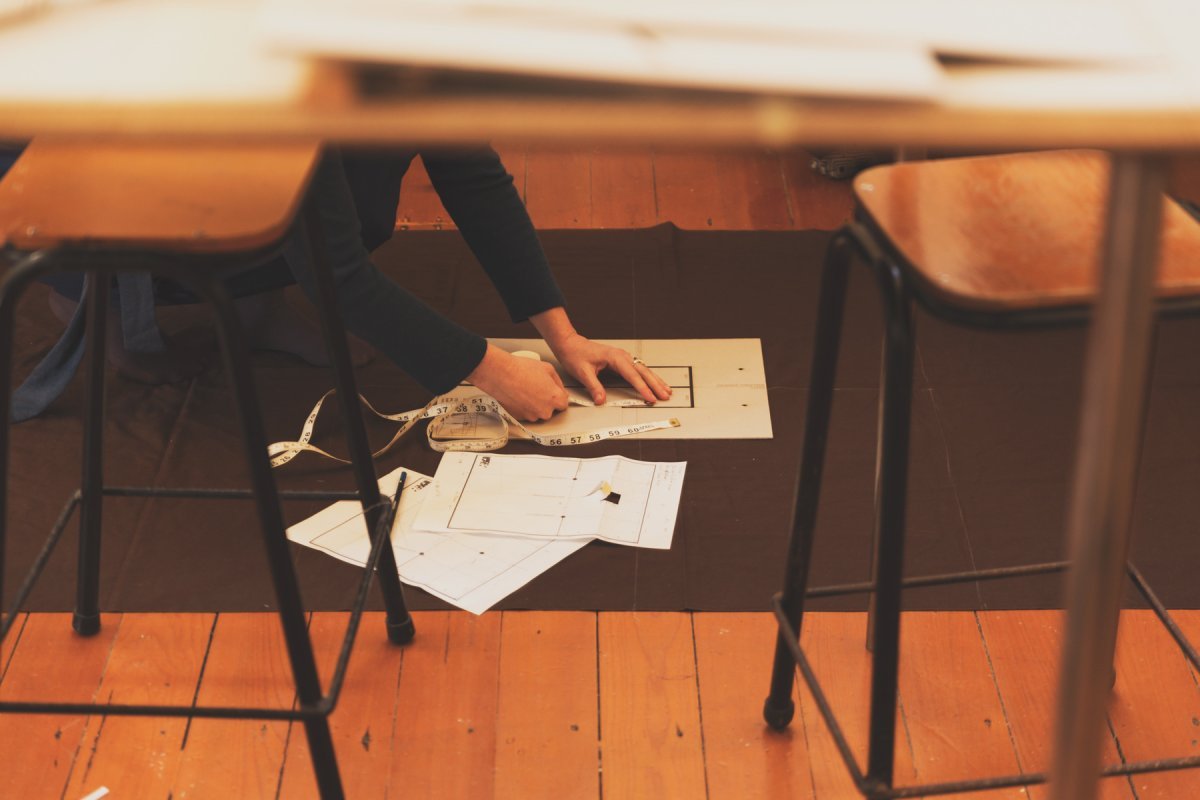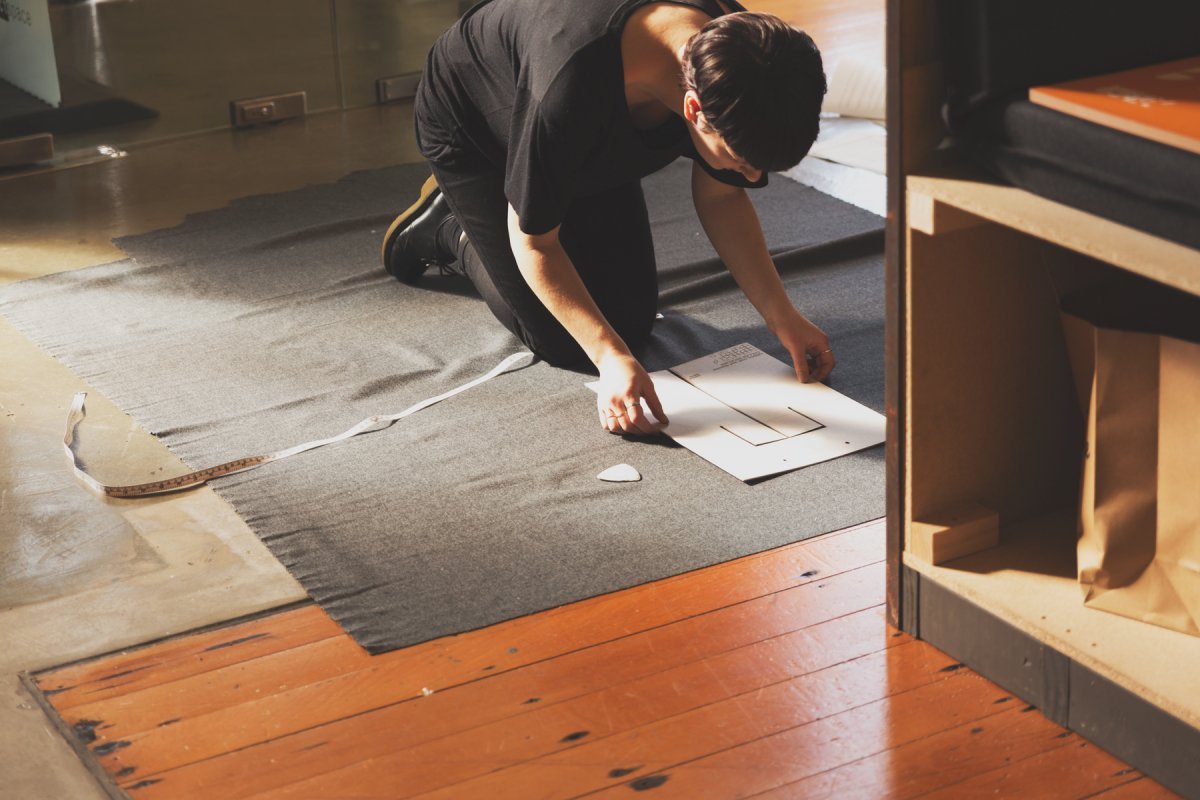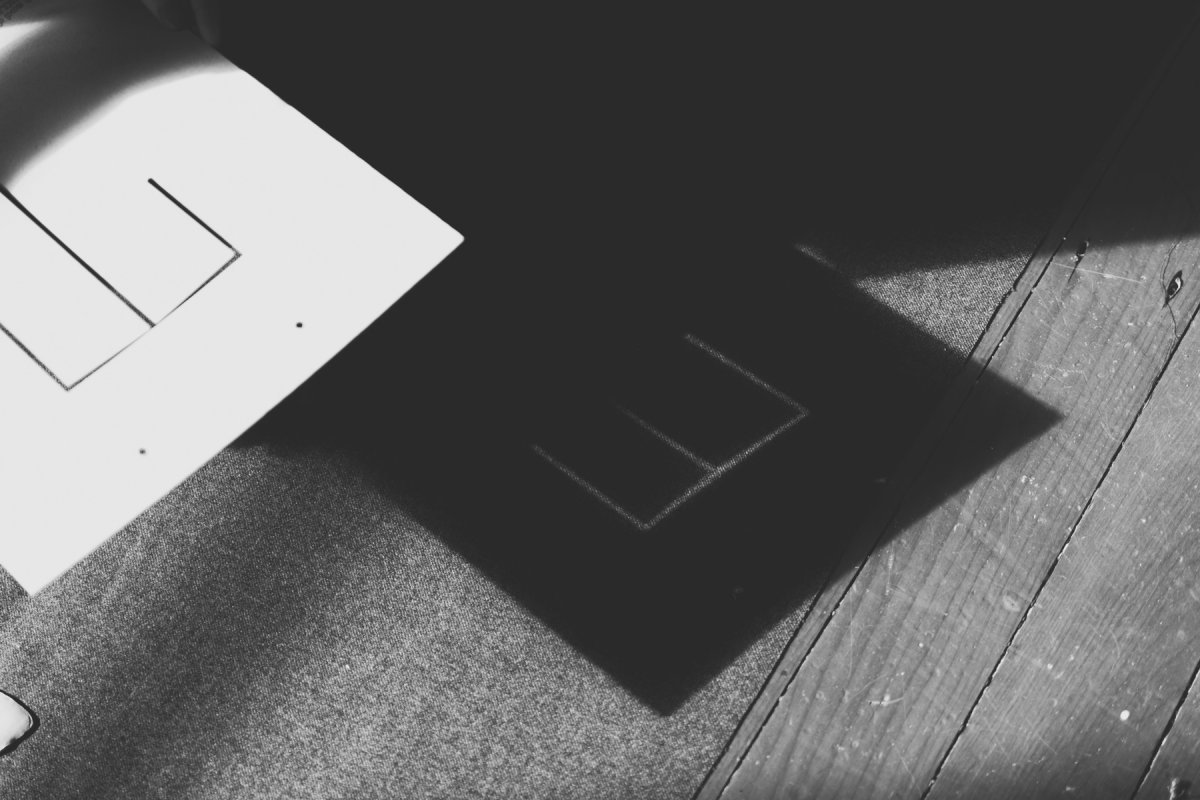Make/Use: Your Style
This workshop explored the application of the Make/Use system to any piece of cloth. It covered the basics from Workshop 1, however this time participants brought along fabric of their choice. Maker/users were guided through the laying-out of their own custom 'flat' using the Make/Use Grid and Templates, from which they then constructed a finished garment. Participants chose from a selection of 6 Make/Use designs and experimented with modifications to suit each individual's body, taste, sewing experience, and sense of adventure.
The Make/Use Grid & Template System
In its simplest form, Make/Use is a set of zero waste garment patterns that are drawn, screen-printed or digitally printed onto fabric, and contain built-in opportunities for user modification – the maker/user has the ability to make, use, re-set, re-make, and re-use. Taking this a step further, Make/Use also provides options for customising the patterns themselves. A key limitation of most zero waste patterns lies in the difficulty in easily modifying the pattern for different fabric widths – something that would usually require a re-design of the pattern, which is beyond the skills of many everyday makers and users. A similar problem occurs with the need to alter patterns to change the fit or to suit different body types.
By way of a solution to these issues, the Make/Use Grid and Templates allow the system to adapt to different parametric variables – the width or length of the fabric, or the desired fit of a garment. Furthermore, by separating out the key components of the Make/Use garments (neckline, body rotation, sleeve cut, sleeve rotation etc.) into different templates, an additional level of interchangeablility and adaptability is introduced. Not only can a maker/user configure these components on any width or length fabric, using the Make/Use Grid to aid placement, they might also explore different combinations, for example, combining the T shirt pattern with the neckline from the coat or wrap dress. Beginning with the grid set-out, maker/users can apply the templates directly to the fabric to mark out their own custom 'flat' pattern.
Each Make/Use garment made in this method is unique to both the fabric and the user. The length of a Make/Use tube dress can be altered to suit an individual’s height; a favourite fabric can be used to make any of the garments in Make/Use; new iterations can be created by combining templates in ways dreamt up by the maker/user. The possibilities are literally endless, as was discovered by participants in the Make/Use Your Style workshop. The individuals came from a wide variety of backgrounds and abilities, and brought with them different bodies, tastes, fabrics and aims. Each Maker/User was able to gain an understanding of the system and customise a Make/Use design to suit their fabric, body and preferences.
The Grid
The workshop began with an exploration of the Crop Tshirt flat on paper to understand the fundamentals of the Make/Use system, including key concepts such as volume creation (making a tube for the body to travel through) and volume redistribution, where the tube is ‘bent’ to transform its shape around the body. The participants were then guided through an explanation of the Make/Use Grid that underlies the garment pattern. All of the Make/Use garments utilise this grid in some manner – in fact, it is the main reason behind the essential simplicity of the system. The grid system establishes key markers on the fabric relative to fabric, body and desired garment design that can then be used to place the Make/Use Templates. Rather than being based on set measurements, the grid instead uses interrelated parametric variables that relate to the way in which the width or length of the fabric is divided into sections. Fractions of the width of fabric, and units based on the maker/user’s own body are used to determine the grid set-out, enabling them to create a garment tailored to the specificities of both their fabric and their body.
The Templates
Once the maker/users had set out their grid on their fabric, they were ready to start placing the templates. These templates are essentially a Make/Use garment pattern broken down into separate components. The Tshirt pattern, for example, can be made using two essential templates – neckline (choice of round, wide or collar) and sleeve/body cut – and the following optional templates: body rotation, sleeve swap, shoulder rotation and elbow rotation. Each template contains basic information that allows the user to orientate the position of that component within the overall pattern, and to locate the template with respect to key points on the Grid. Some templates offer options to select, for example, one of three different curves that would alter the steepness of a curved rotational cut, which would result in altered severity of bend/drape. The templates also offer flexibility in extending or contracting a curve to suit a different width or length, whilst maintaining the integrity of the desired shape.
Once again, the potential complexity of this system is simplified and made accessible through the efforts of the Make/Use team to develop user-friendly tools that empower the users to engage confidently with the creative process. The workshop participants were able to employ these templates to achieve some incredibly diverse, personalised outcomes. In the future we imagine that the templates and grid will form the basis of a piece of software or a coded digital interface that enables a maker/user to select the templates they wish to use, input their measurements and those of their chosen fabric, and adjust these parameters to generate a personalised Make/Use pattern. This pattern could then be printed as paper templates or digitally printed straight onto the fabric to create the 'flat'.
_
Make/Use would like to thank the participants in this second workshop, and those that took part in the earlier test workshops in Wellington. Your enthusiastic engagement with our system has been invaluable in its continuing development. It gives us great joy to see the designs and templates employed successfully to produce such an array of unique garments!
